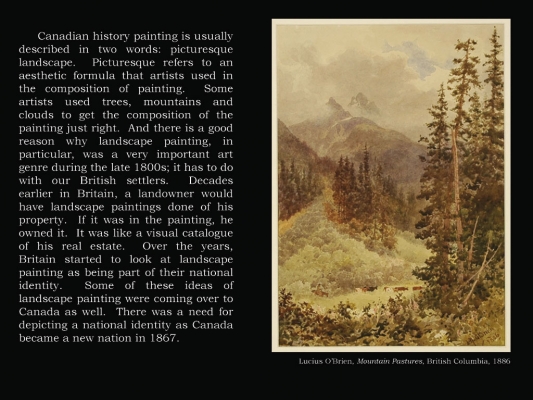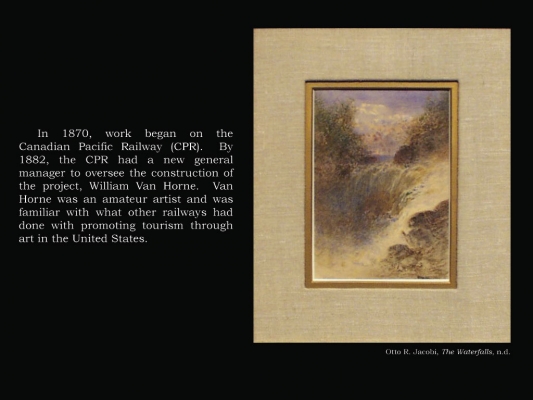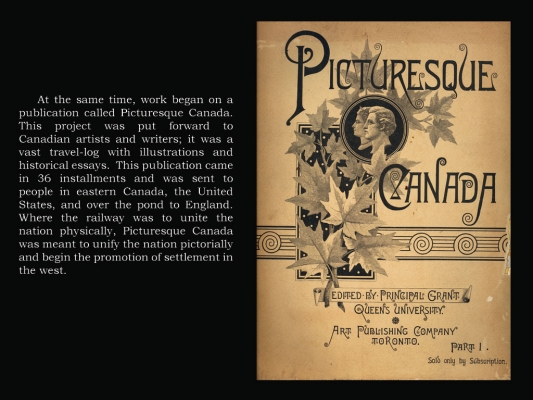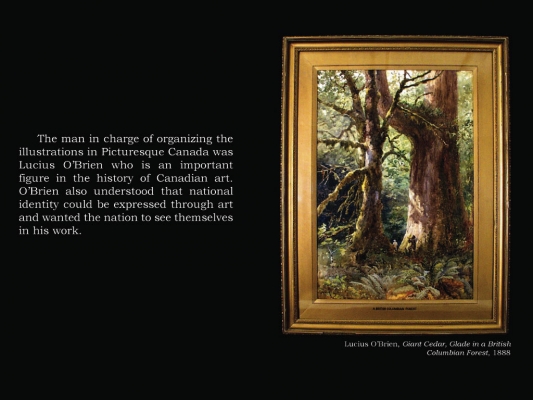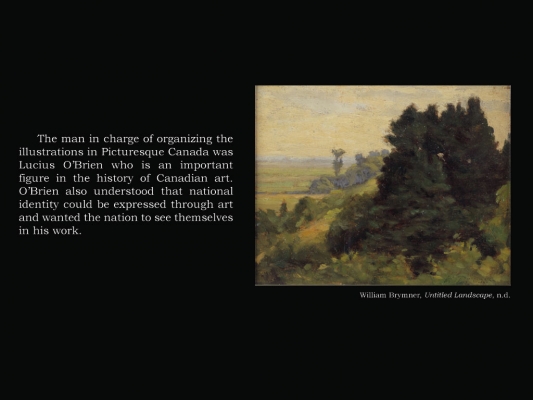The University of Lethbridge Art Collection is very important for many reasons. One of these reasons is held within a portion of the collection that addresses how the country became unified and began how we looked at national identity. The Canadian history paintings from the collection can tell us about what Canada was like after 1867 and how the Canadian Pacific Railway was the driving force in the unification of the Great White North. Watch the short video below or click on panel to advance slides and learn more.
Questions
1. Our ideas of visually representing national identity has changed many times since Confederation in 1867. In the late 1800s, picturesque landscape painting represented national identity. Today, the maple leaf represents our national identity. Some have suggested that a Tim Horton’s coffee cup better represents national identity. What else represents this? What might represent Canadian national identity in the future?
2. Pictures of many natural and man-made landmarks represent regional and national identity. How many man-made landmarks are there in Canada? What about other countries? For example: The High Level Bridge represents Lethbridge; Mount Kilimanjaro represents Tanzania; and the Taj Mahal represents India.
3. Since the CPR did not extend all the way to British Columbia when artists were working on Picturesque Canada, they had to use photographs of landscapes from the CPR land surveyors of the western provinces to make the illustrations. Photographs, at that time, were not considered to be artistic and were not as sharp as the digital photos we have today because of long shutter speeds. Over time, our ideas of what is art and what is not art have changed. What else was not considered art from 1867 to the beginning of the 20th century?
Activities/Projects
1. In the 1800s, promotional materials were mainly produced by print. Today, we have many media resources. If Canada were to enter into Confederation today, what would publications like Picturesque Canada look like? Would it even be a publication? How would you promote tourism and immigration to an area not many people have seen? (You might want to create something that promotes a room of your house or your backyard.)
2. Landscape artists were known for overly exaggerating parts of their paintings. However, knowing how vast the Canadian Rockies are and how lush the British Columbia forests are, were any of Lucius O’Brien’s paintings embellished? Can you figure out if the cedar trees in Giant Cedar, Glade in a British Columbian Forest (slide 5) are really that big compared to the men in the painting? Assuming that the men in the painting are of average size, what is the circumference of the tree? There are many photos of trees from Stanley park on-line; the trick is to find one with a person in it and re-do the calculations you have for the painting into the photo. What are the results?
3. Most of these works, combined with other Canadian History paintings, are still being studied. Vistas: Artists of the Canadian Pacific Railway was a recent exhibition of these paintings organized by the Glenbow Museum in Calgary, Alberta. The exhibition opened at the Glenbow in 2009 and is travelled into 2011. During the exhibition at the Glenbow, there was another exhibition, set up as a response to the works, where a group of LEGO enthusiasts made their own CPR vista scenes. What can you build today?
http://www.brickshelf.com/cgi-bin/gallery.cgi?f=401712
List of artworks (links to art collection database)
(temporarily unavailable please contact ulag for further info)
